Green Wednesday: Rediscovering Bats and Combating Sudden Oak Death
By Penny Pawl, UC Master Gardeners of Napa County / By Kathleen Scavone, Environmental Contributor
Every Wednesday Napa Valley Features includes posts from environmental voices and the UC Master Gardeners of Napa County, who share research-based horticultural advice. Together, these contributors provide valuable insights into sustainable gardening practices and climate-related topics relevant to our region.
"What You Might Not Know About Bats" by Penny Pawl, U.C. Master Gardeners of Napa County: This article explores the vital ecological roles of Northern California's bats as pollinators and insect-controllers, alongside fascinating facts about their habits, benefits and challenges due to habitat loss and disease.
"Sudden Oak Death Disease Problems and Prevention" by Kathleen Scavone, environmental contributor: This article examines the threats posed by sudden oak death to California's oak population, highlights local conservation efforts and underscores the importance of biodiversity in preserving the ecosystem’s balance.
What You Might Not Know About Bats
By Penny Pawl
NAPA VALLEY, Calif. — Did you know that 17 different types of bats live in Northern California? Some are pollinators, and others are insect-eaters. Both are important to our environment.
The loss of pollinators is a critical issue, and bats are an important one. We rarely see them because most types fly at night. Those of the insect-eating species consume many of their prey every night.
Some bats are pollinators, others insect-eaters. Both are vital to our environment.
Count Dracula and the vampire bats in movies are fictional beings, but the problems facing the 154 bat species that live in North America are very real. Half of those are at risk from wind machines, people and diseases such as white-nose syndrome. Some South American bats are the only ones that lick blood from animals.
Here are a few more facts about bats.
The saliva of some vampire bats contains a natural anticoagulant that has been isolated for medicinal use. Known as Draculin, it is used to treat stroke victims and others with blood-clotting issues.
Bats have evolved over eons from small ground animals to mammals capable of flight. If you look at the wing, you can see the outline of their old front hand or paw. Because bats fly, some people assume they are birds, but birds do not give birth to live babies, nor do they carry their babies around on their chests.
Without bats there would be no tequila. The agave plant, the basis for tequila, is pollinated by three bats native to Mexico. No bats, no margaritas, so raise a glass to the bats.
Not all bats live in groups. Some, such as the hoary bat, live on their own.
In California, bats are protected by the Department of Fish and Wildlife. It is illegal to capture or kill them without a permit.
The beautiful bats pictured in some Facebook groups are almost all Asian fruit bats. They have the face of a little fox and are not found in North America. In Thailand I once saw several hundred of these bats hanging from a huge tree shading a restaurant. They didn’t bother anyone, and no one bothered them.
If you have driven across the Yolo Causeway in summer, you have driven over a large nesting area for bats. It is estimated that 250,000 bats nest under the causeway. They spend their days there and their nights roaming the fields. These are migratory bats, and during the winter they either hibernate or fly to warmer climates. Summer crops are grown in the causeway, and because the land often floods, it is very fertile.
Northern California Bats is an organization that cares for bats in distress. These bats are groomed, fed and cared for until they can fly again. How do you groom a bat? With a mascara brush! NorCal Bats members also give talks about the benefits of bats and conduct walks at the site near the Yolo Causeway.
Climate change is certain to cause habitat loss that will affect bats.
Bats carry many diseases, including rabies. If you see a bat in distress, call an expert.
If you want to put up a bat house, you should install it in the spring, when bats are moving to their summer grounds.
You can buy bat guano, a highly regarded fertilizer, online.
Bay Nature magazine had an excellent feature on bats in the Spring 2024 issue. In the same issue you’ll find another article about the Archer Taylor Preserve, right here in Napa County.
Library Talk: Join UC Master Gardeners of Napa County for a talk on “How to Improve Water Retention in Our Landscapes,” on Thursday, Nov. 7, at 7 p.m. via Zoom. Learn some water catchment/retention approaches that you can use in your own yard to “Slow It, Spread It and Sink It.” Register to receive the Zoom link.
Help Desk: The Master Gardener Help Desk is available to answer your garden questions on Mondays and Fridays from 10 a.m. until 1 p.m. at the University of California Cooperative Extension Office, 1710 Soscol Ave., Suite 4, Napa. Or send your questions to mastergardeners@countyofnapa.org. Include your name, address, phone number and a brief description. For best results attach a photo.
If today's story captured your interest, explore these related articles:
Transform Your Garden — Embrace Low-Maintenance Native Plants
Weekender Encore: Nature’s Sweet Treasure — The Blackberries of Napa Valley
Penny Pawl is a UC Master Gardener of Napa County.
Sudden Oak Death Disease Problems and Prevention
By Kathleen Scavone
NAPA VALLEY, Calif. — Sudden oak death is a deadly plant disease that affects millions of oaks in California and Oregon. The pathogen responsible for the disease is Phytophthora ramorum. It may seem overwhelming to hear of yet another problem related to the environment, but efforts are in place to conserve Napa Valley's precious oaks.
Sudden oak death first came to the attention of scientists in California in 1995, when anomalies in tanoaks such as wilting of the plant's new shoots, leaves turning brown and a dark liquid oozing from tanoak trunks causing early death of the trees were noted. Other equally devastating symptoms were noted in California's black oaks, live oaks and other forest species. The disease is believed to have been inadvertently introduced to the state on nursery stock.
Sudden oak death is devastating California’s oaks, but community efforts are fighting back.
In order to eradicate the disease, it is necessary to understand and map it. The folks at Napa County Resource Conservation District have been holding Sudden Oak Death Blitzes annually for 14 years in conjunction with the UC Berkeley Forest Pathology and Mycology Lab. Bill Pramuk, consulting arborist at Pramuk, Trees and Associates, is the Napa coordinator for the annual SOD Blitz, the most recent of which was held May 4. Statewide results from more than 20 California locations from the Oregon border south to Santa Barbara will be available in late winter on the SOD Blitz Project website after Matteo Garbelotto and his team complete lab analysis of samples collected by volunteers.
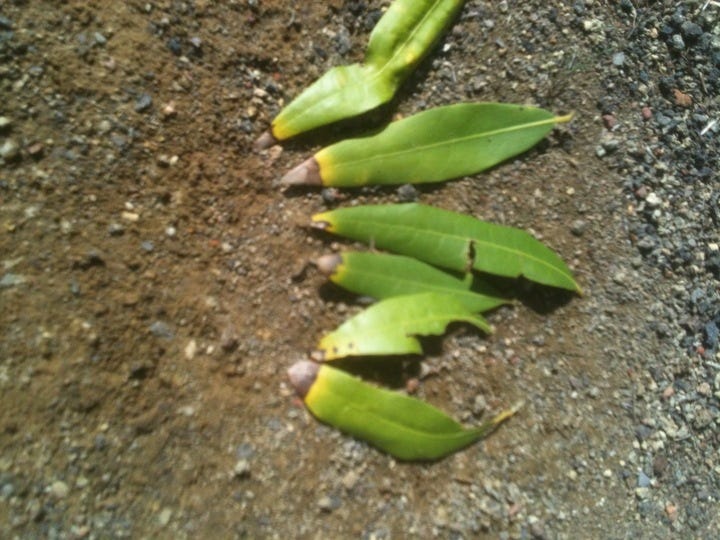
The 2023 results of the SOD Blitz contained great news. All of Napa County's samples tested negative. There was some concern that the rain that occurred after the blitz might have stimulated the pathogen since it thrives on wet conditions. Volunteers making up the team of diligent citizens were given instructions to download a free SOD map app in order to ascertain if trees they were noting were tested previously. This year the study revolved around California bay laurel trees, as they are significant carriers of the disease. SOD spreading to various species of oaks has been occurring more often in wet years than in dry, drought-stricken years.
Next, volunteers needed to go online to the UC Berkeley's Matteo Lab webpage to watch short training videos, then sign up to pick up their sampling packets at the Napa County Agricultural Commissioner's Office. This type of citizen science work is appropriate for families and classrooms as well as individuals, according to Garbelotto. Any trees that are noted to have problems may need to have their bark sprayed or receive trunk-injection treatments from qualified arborists.
Biologists working through the University of California’s Agriculture and Natural Resources programs’ Statewide Integrated Pest Management Program are keeping a keen eye out for another California culprit in tree disease, invasive shothole borers. The non-native beetle problem has been noted within the state's borders in seven Southern California counties and beyond and is being monitored as a potential threat to forests and landscape trees of many species.
Invasive shothole borers are tiny beetles that have a nasty habit of boring into trees, introducing a fungus and eventually killing the host tree. Two species found in California are the polyphagous shothole borer (Euwallacea fornicatus) and Kuroshio shothole borer (Euwallacea kuroshio), which appear to reproduce prodigiously and can result in tree die-off, cankers and other tree infections. If detected, chemical control is advised; however, prevention in the form of inspecting trees often, buying locally sourced firewood, proper irrigation and the like make for the best management.
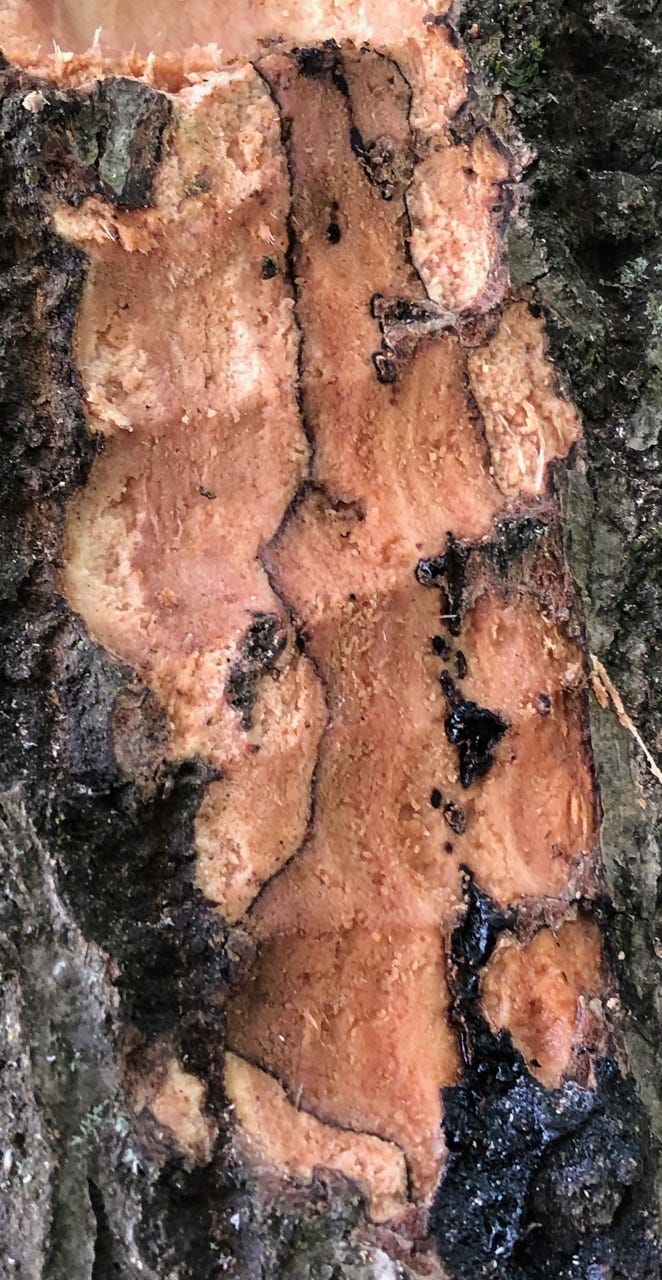
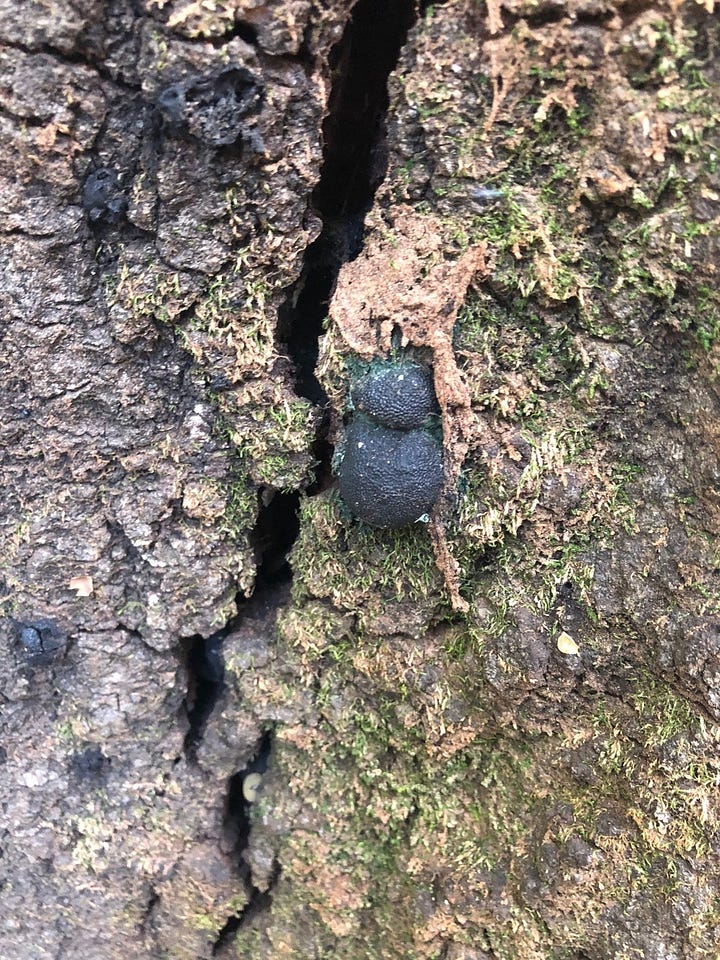
So why all the fuss about a few trees? Biodiversity is the quick answer. The term was made famous by biologist E.O. Wilson at a 1986 symposium, when he explained that biodiversity is “the very stuff of life.” A contraction of biological diversity, biodiversity — the sheer array of life forms on earth — has become a problem in this time of climate change as the landscape loses myriad species of plants and animals worldwide, both on and off the threatened and endangered species lists. Earth's ecosystems have taken millions of years to evolve, but it is only relatively recently that biodiversity has been comprehended as vital in its many forms. The complex web of life depends upon all of the parts surviving.
In “California Plants — A Guide to Our Iconic Flora,” author Matt Ritter says California is a biodiversity hotspot, with an array of ecological niches that allow more than 6,500 native plant species to thrive here. Consider the humble oak, for example, and the complexity that abounds on and around it. Oaks are giving trees, playing host to many woodpecker species, jays and other corvids, fungi, flies, arachnids, beetles, moths, squirrels, deer and more.
Glenn Keator explains in “The Life of an Oak” that some oaks are called keystone species by ecologists since the interrelated life that abounds in and around an oak plays a vital part in the health of an oak woodland or forest. Biodiversity loss also has a broader impact than loss of species that are dependant upon specific trees when problems such as SOD occur. The spread of disease in trees may potentially kill off whole tree populations and thereby create fire hazards.
Oaks and trees of many species have always been valued esthetically. Historically speaking, the tannin in tanoak trees and other oaks was also an important feature because it was utilized to process leather for horse equipment or tack such as saddles, harnesses and reins. Going back thousands of years, ethnobotanically speaking the Indigenous people in what is now California relied upon acorns of differing species for breads, soups and more. Today acorns and food from bay laurel trees still play a part in their diet.
A Sierra Club article titled “The Tanoak (Notholithocarpus densiflorus), A Significant Santa Cruz Native Plant” says the acorn is a nutritious food source, containing fats, protein and carbohydrates along with minerals. Tanoak was also used medicinally by the first people of California for tooth ailments and facial sores. The U.S. Department of Agriculture’s Natural Resources Conservation Service Plant Guide titled “Tanoak” explains that species of tanoak, coast live oak, canyon oak, black oak and others harvested between 500 to 2,000 pounds of the nut annually in each family. Tanoak acorns were enjoyed and favored by Pomo, Yurok, Hoopa and Salinan tribes, among others.
It is vital to remain vigilant to help with plant conservation and retain valuable biodiversity. It is also critical not to become complacent in efforts to locate and counteract problems such as sudden oak death disease. Each season gives us reason to look carefully to nature's fierce beauty. It has a special way of inspiring us and bedazzling us all at once, adding depth along with wonder to each day.
If today's story captured your interest, explore these related articles:
Napa's Path to Sustainability: Weaving Local Plans Into One Resilient Future
Birdwatching in Napa County Reveals Avian Wonders and Conservation Champions
Calistoga's Old Faithful Geyser: From Tourist Trap to Natural Wonder
Green Wednesday: Fall Gardening Fun and Youth Climate Advocacy
Under the Hood: Climate Change's Growing Impact on Napa Valley
Pruning and Climate Adaptation Tips for Home Vineyards in Napa Valley
Black Sears Family Donates Land to Help Create Wildlife Corridor
Kathleen Scavone, M.A., retired educator, is a potter, freelance writer and author of three books: “Anderson Marsh State Historic Park: A Walking History, Prehistory, Flora, and Fauna Tour of a California State Park,” “People of the Water” and “Native Americans of Lake County.” She loves hiking, travel, photography and putzing in the garden.


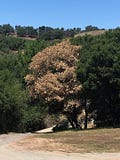


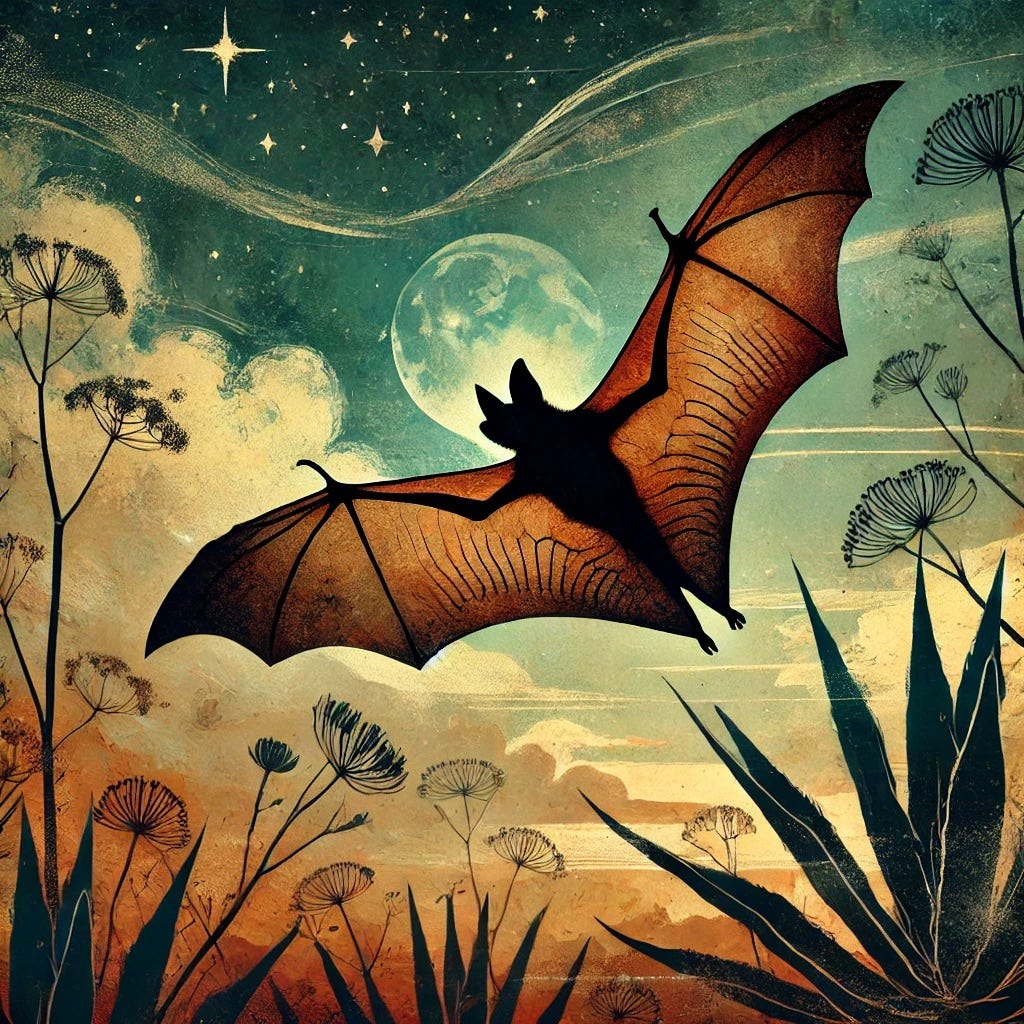


Very important information. Thank you.